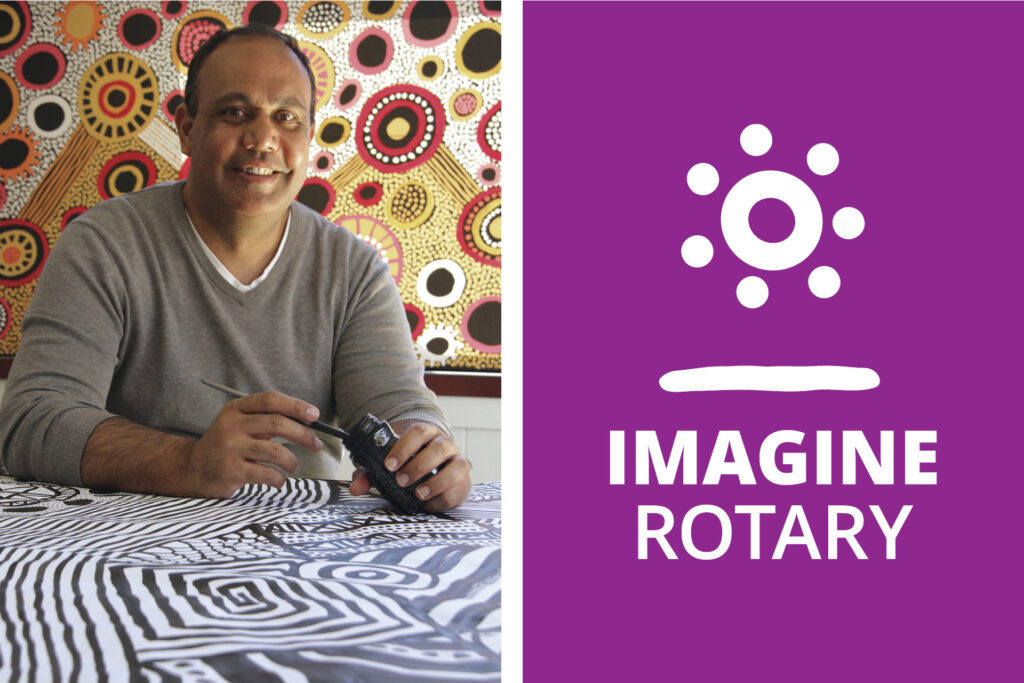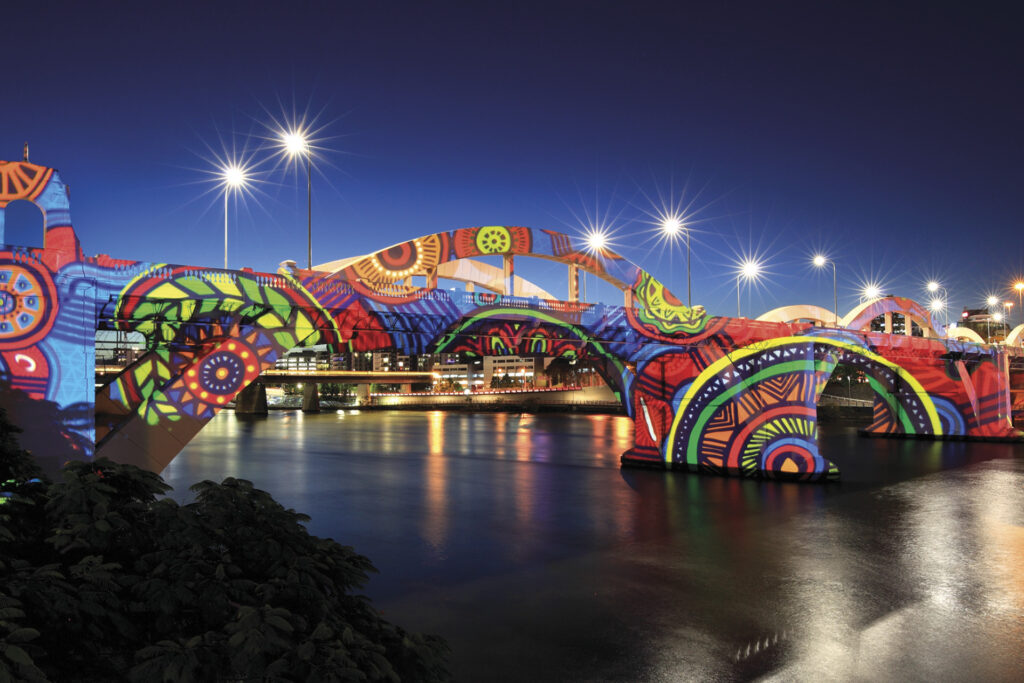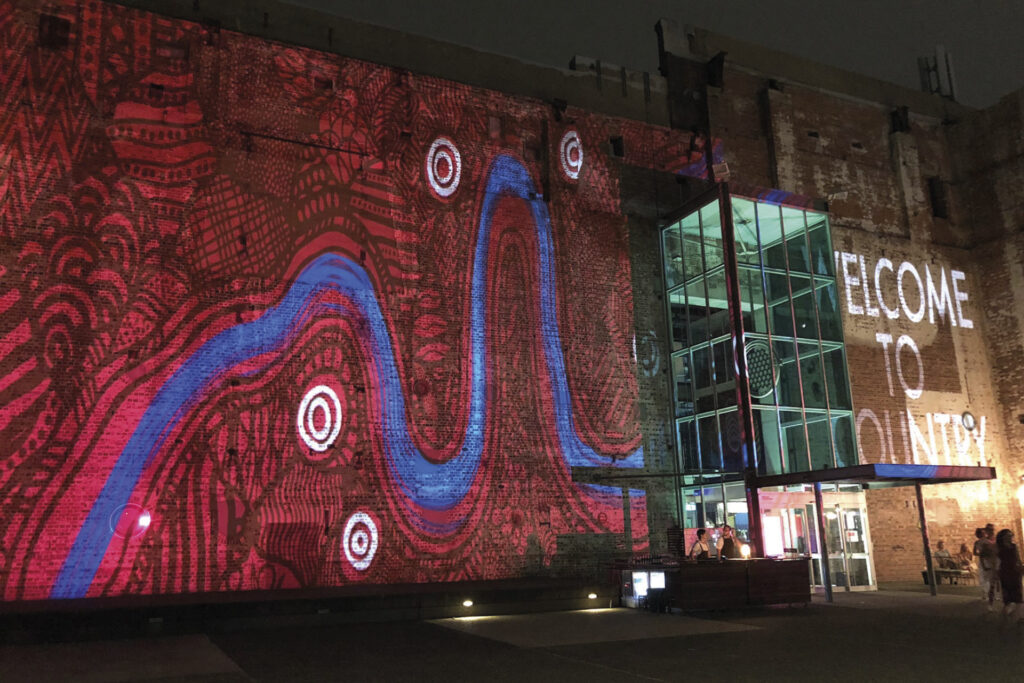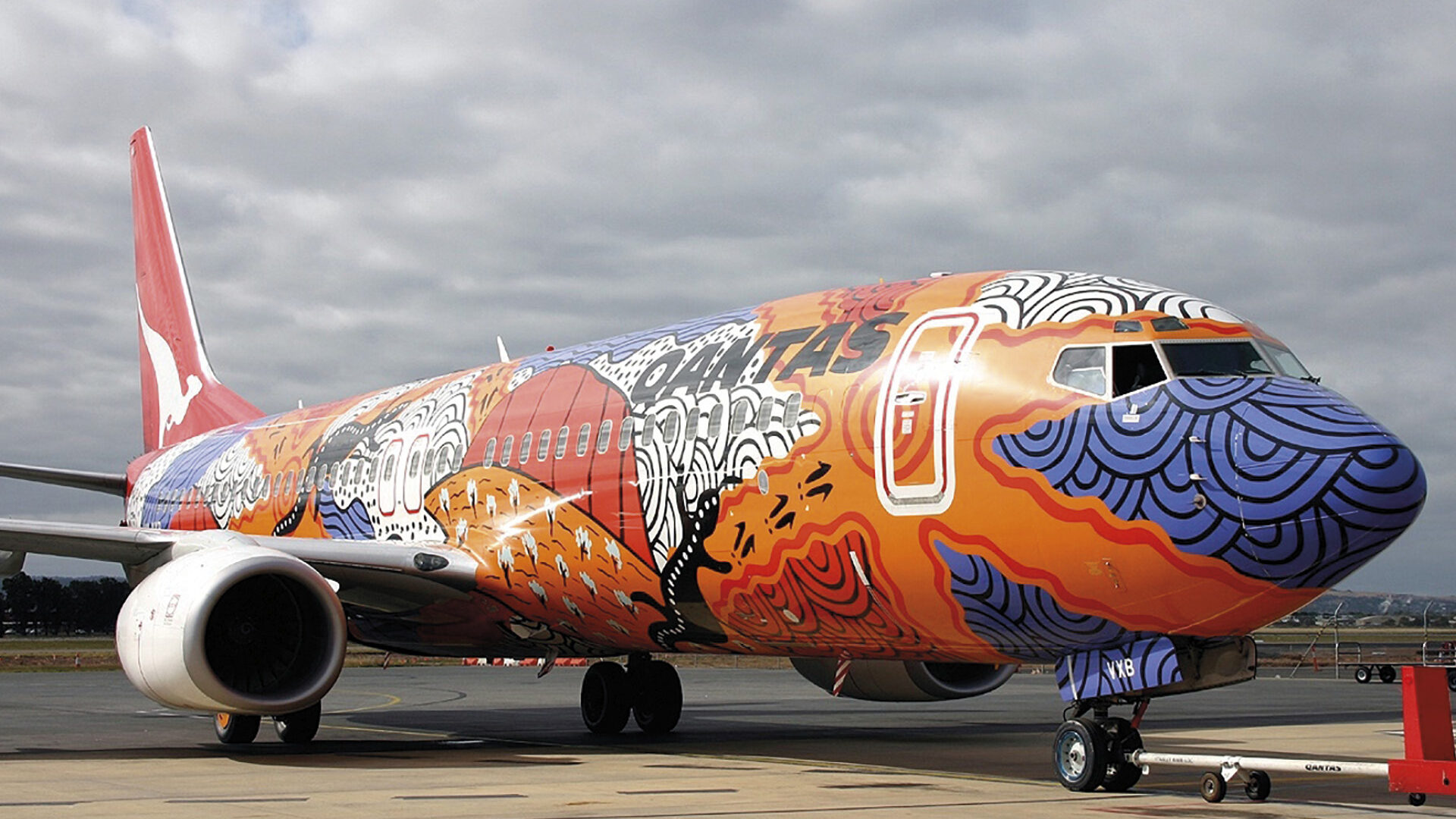Working closely with Rotary International President-elect Jennifer Jones, Brisbane artist and designer Riki Salam drew on cultural parallels to create a multi-layered logo for her presidential theme, Imagine Rotary.
By Kylie Hatfield
Rotarians around the world are being urged to harness connections to turn big dreams into reality through the 2022-23 Rotary International presidential theme, Imagine Rotary.
In a fitting representation of dreaming and connectedness, the logo to accompany the theme reflects diversity, inclusion and opportunity, while depicting Aboriginal and Torres Strait Islander Cultures.

Brisbane-based artist Riki Salam was commissioned to create the logo and drew on the theme and his own Cultures for inspiration, describing the logo as having many layers of meaning.
“Essentially, the logo depicts a Star above the horizon, which represents leadership and a guiding light in navigational terms. Aboriginal and Torres Strait Islander People navigated by the stars over vast distances across land and sea,” said Riki.
The logo also represents people coming and working together, with the horizon line element also representing a digging stick – an important tool used traditionally by Women to hunt and gather.
“The digging stick was usually crafted out of a heavy hardwood like Ironwood or Gidgee wood and used to dig for a variety of bush tucker such as Yams, Honey Ant, Goanna and other foods. The digging stick in the logo represents hard work, provision and change,” said Riki.

The colours used in the logo – purple, green, and white – were chosen by incoming Rotary International President Jennifer Jones specifically for their representation and also have multiple symbolic meanings.
As the three colours of the Suffragette flag, purple, green and white represent diversity, equity, inclusion, empowerment, and the opportunity to grow Rotary’s female membership. The colours also represent three areas of focus for Rotary – polio eradication (purple), the environment (green), and peace and conflict prevention (white).
Riki described the opportunity to design such a significant logo as a unique privilege and an honour, and began the design process by speaking with Jennifer to understand her goals and aspirations for the upcoming year.

“I then looked for parallels in both Aboriginal and Torres Strait Islander Culture and tried to draw comparisons from Traditional and Contemporary aspects of all of these considerations.
“My Cultures are a key source of inspiration for me, which I draw upon on a daily basis.”
Riki was born and raised in Cairns on Yidinji Land and is a member of and connected to Kala Lagaw Ya – Western Island groups (St Pauls – Moa Island), Kuku Yalanji Peoples on his Father’s and Grandfather’s side and a member of the Ngai Tahu people in the South Island of New Zealand on his Mother’s side.
Following his education in both Cairns and Brisbane, Riki has spent more than 20 years as a graphic designer and artist, and established his own agency, We Are 27 Creative, with his wife, Diana, in 2015.
Working in pen, ink, brush, gouache on paper and with acrylic paints, Riki explores concepts of Traditional Culture in a Contemporary format and has produced artwork for some of the biggest companies in the country, including Telstra, Origin, Woolworths, the Healing Foundation, and the Australian Human Rights Commission. Riki designed the identity for the G20 Summit in 2014 and the Qantas painted Boeing 737-300, Yananyi Dreaming.

Riki has also worked with the Fred Hollows Foundation on consecutive Reconciliation Action Plan documents, completing the design and layout while working with Traditional Artists commissioned by the Foundation.
“The Fred Hollows Foundation is a great organisation that is making significant differences to First Nations People’s lives here in Australia and around the world by restoring people’s eyesight, enabling them to live their lives to the full,” said Riki.
Riki’s artworks and designs raise cultural awareness, and he says that is something he does consistently through his work and personal life.
“Being an advocate for Aboriginal and Torres Strait Islander Cultures through my art and design is something that I hold with great respect, integrity and value,” said Riki.
“It is great sharing knowledge of Culture to people from all different organisations and people from all walks of life. A conversation is a great pathway to understanding.”
